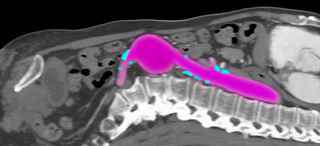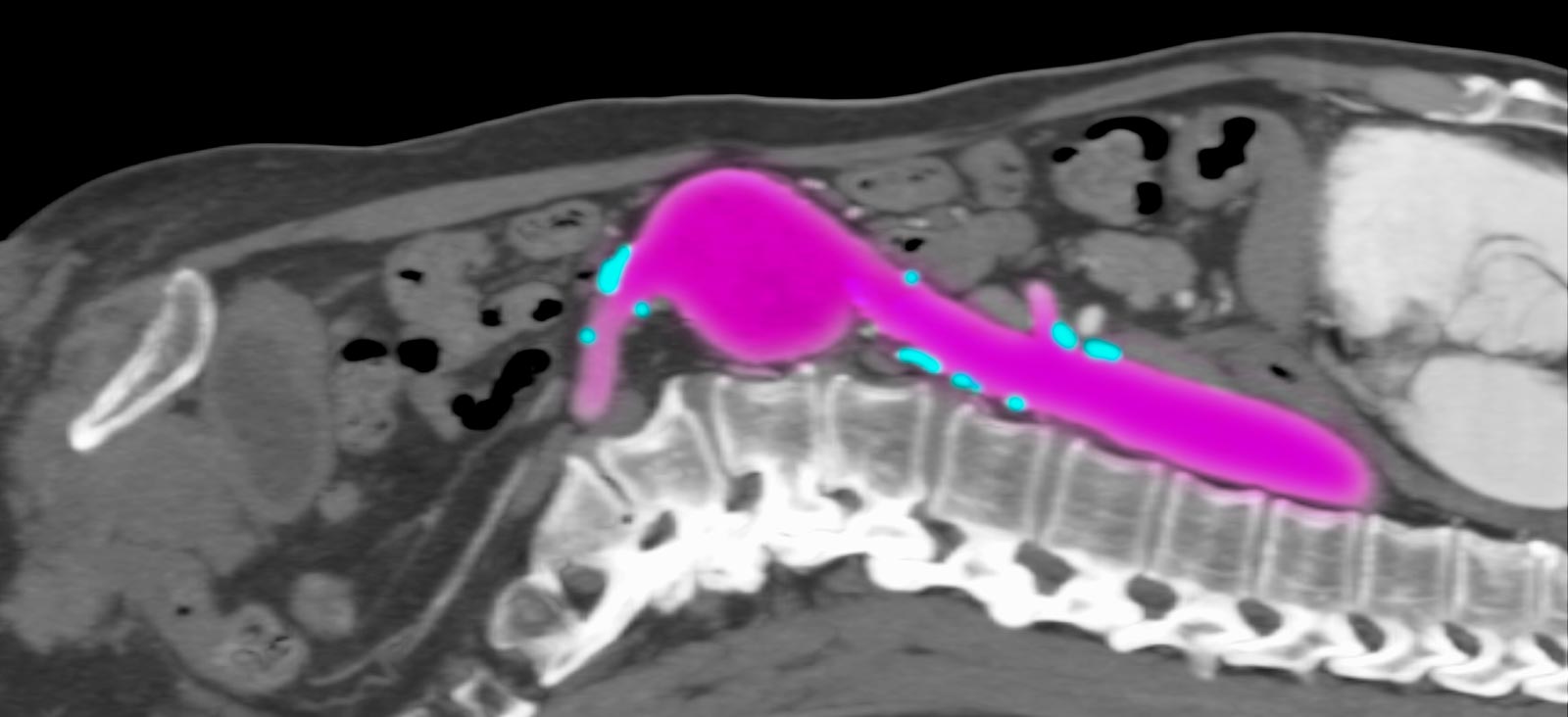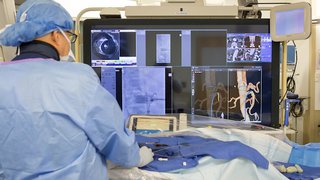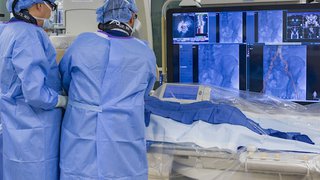How Is an Abdominal Aortic Aneurysm Evaluated?
At UT Southwestern, our vascular specialists use computed tomography angiogram (CTA) scans to show detailed images of our patients’ arteries. They use these scans to choose the best treatment approach. Our specialists review patients’ comprehensive medical data to evaluate how an endovascular stent procedure compares with traditional surgical options or determine if a combined approach is needed.
What Are Abdominal Aortic Aneurysm Treatments?
Depending on the patient’s overall health and specific condition, our specialists will recommend the appropriate procedure. UT Southwestern’s Advanced Endovascular Aortic Program focuses on treating complex aortic diseases using total endovascular therapies that are minimally invasive. Led by Carlos Timaran, M.D., the team has developed a Physician-Sponsored Investigational Device Exemption (PS-IDE) protocol, which we have used since 2014 to implant fenestrated and/or branched stent-grafts.
With these devices, our vascular surgeons can repair most aortic diseases, such as complex suprarenal (above the kidneys) and thoracoabdominal aortic aneurysms and chronic dissections, using this minimally invasive approach. Our endovascular aortic approach is appropriate for most patients, even those who cannot have open surgery, providing a faster recovery.
In addition to the fenestrated devices, we are working with other, similar devices to bring the latest, evidence-based treatment options to our patients. In the UT Southwestern Advanced Endovascular Aortic Program, we have treated more than 500 patients with fenestrated and/or branched devices since 2007. Our team is committed to the highest quality of care and excellence in outcomes, achieved through our extensive expertise and adherence to rigorous clinical research methods. Currently, Dr. Timaran and his team are the only vascular specialists in the Southwestern U.S. with access to all devices for the true total endovascular repair of all aortic diseases.
If patients are eligible for an endovascular stent procedure that allows a more rapid recovery, the surgeon will use live radiological images during the procedure to guide a catheter through a blood vessel to the location of an aneurysm to deploy the endograft for repair.
Patients who are not candidates for an endovascular stent procedure might require an open repair approach. Our vascular surgeons will discuss the entire procedure with each patient and explain how traditional surgery offers the best possible treatment. Led by Melissa Kirkwood, M.D., our Complex Open Aortic Surgery Program features renowned vascular surgeons who treat advanced problems including aortoenteric fistulas and removal of infected aortic stent grafts. We offer the full spectrum of open and endovascular aortic care.










